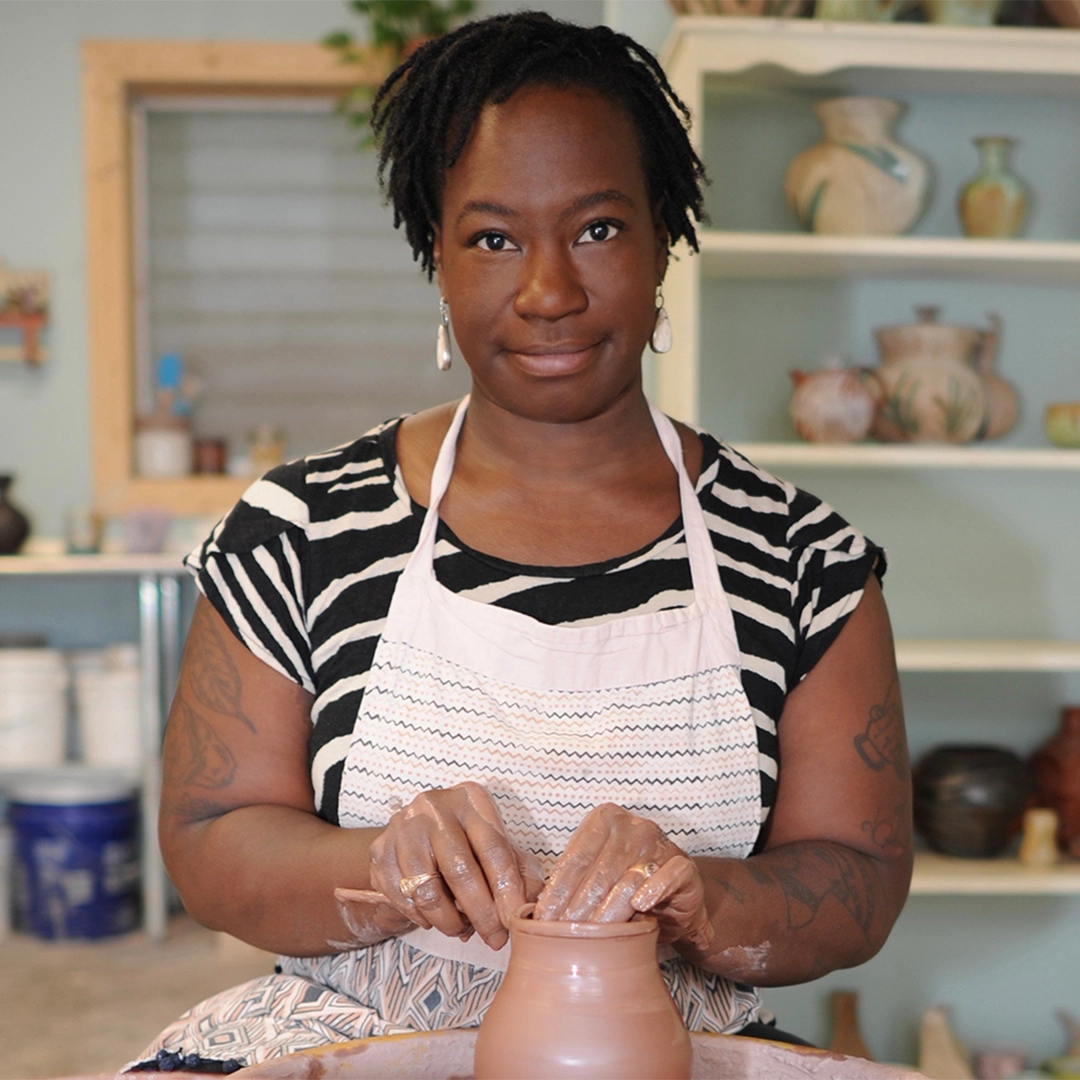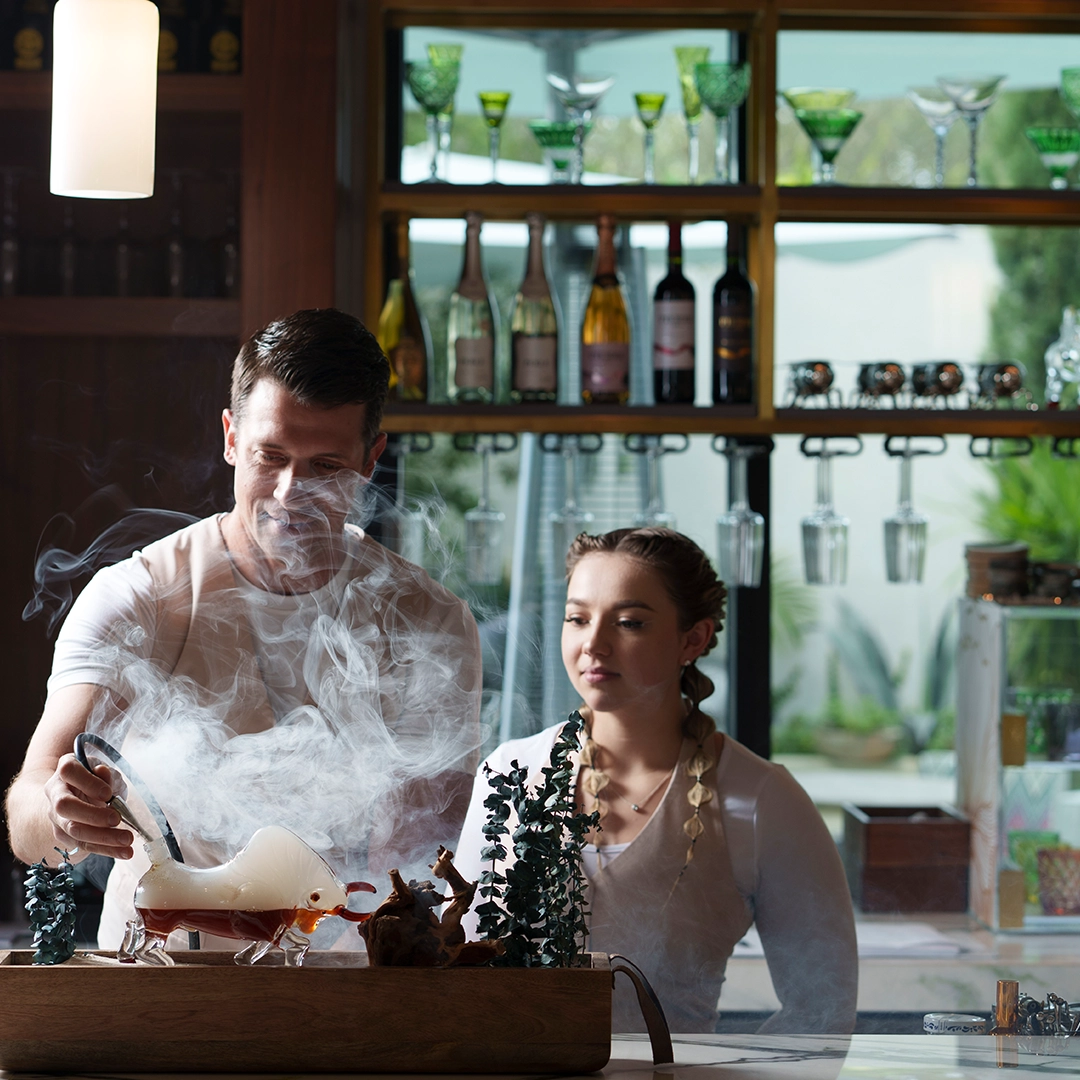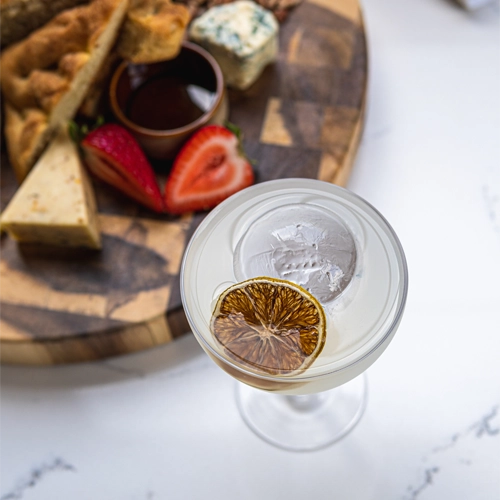by Diane Roberts | September 26, 2018
Where the Wild Things Are
Finding a cure to the concrete in the mythical, restorative nature found in the works of three Florida artists
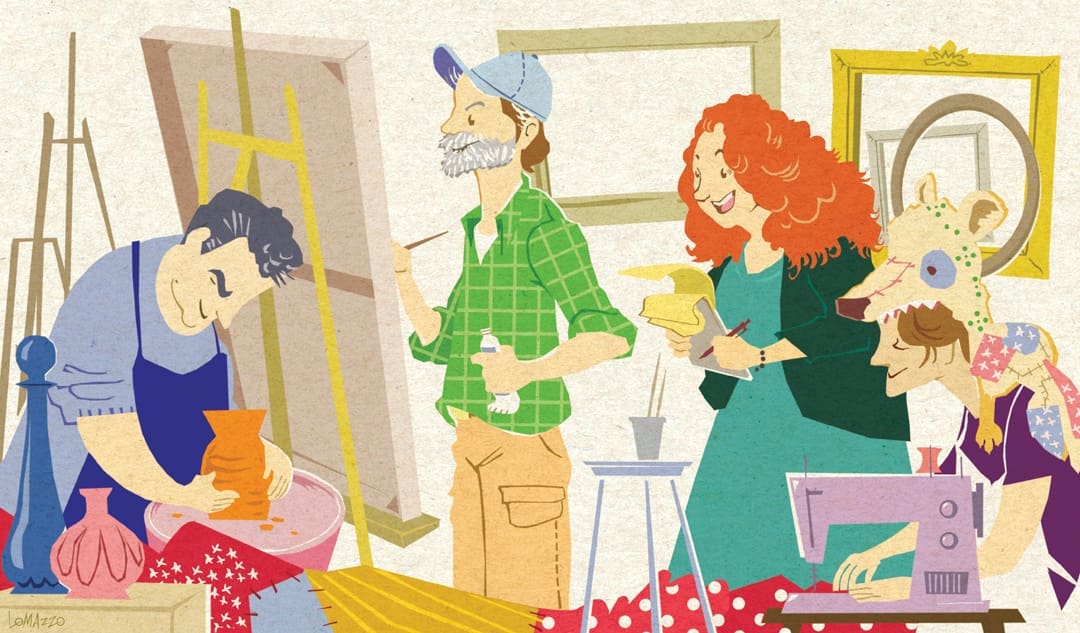
If you want to understand Florida, connect with its sometimes-menacing beauty, encounter the place unmediated by walls, glass and air-conditioning, here’s how you do it: Go outside. Leave the comfortable subdivisions—Osprey Pointe, Oak Arbor, Sweetwater Springs—named for whatever the developer destroyed in order to build them. Get away from the places where nature is highly policed and curated. Go where’s there’s no asphalt. Even if you live in a city of concrete punctuated by a few highly regulated flowerbeds and clipped lawns, surrounded by strip malls and big box stores, McTaco Kings and endlessly replicating interstate motels—in Florida, the wild is never far away. Go to the woods, the swamp, the scrub, the marsh, where you’ll find all those hot green lizards, birds with iridescent feathers, candy-colored wildflowers and shady wetlands humming with the song of a million beating hearts.
There’s something both mythical and restorative about nature in Florida, as three of my favorite artists can show you. Mark Messersmith, Linda Hall and Robin Rodgers make work that celebrates the state’s transcendent beauty and the persistence of animal and plant life here, despite everything we do to contain it, scare it off or kill it. They work in different materials: Hall is a watercolorist and sculptor who works with cloth and paper, Messersmith is primarily a painter who works with oils, and Rodgers is a potter. Hall’s fabric “beasts” are sometimes fanciful, sometimes scary; she has created dream-renditions of ghostly buzzards diaphanous as smoke, portrait heads of David Bowie and Eudora Welty with cat’s ears, and giant masks of beings kin to earthly animals yet conjuring up the images of ancient gods. Messersmith’s critters are under stress from human incursion into their habitat. Rodgers’s Florida animals are serene and iconic like the Native American effigies that translate an animal’s essence into clay or stone.
What I like about these three artists is the way they remind us, sometimes gently, sometimes sharply, that Florida’s natural beauty is endangered. These artists don’t let the viewer pretend we have no impact on the land and water. They both delight us and call us to account. Only one of them is a native Floridian, but then, as an eighth-generation Floridian myself, I know this state has a way of getting into your bloodstream and claiming you for its own.
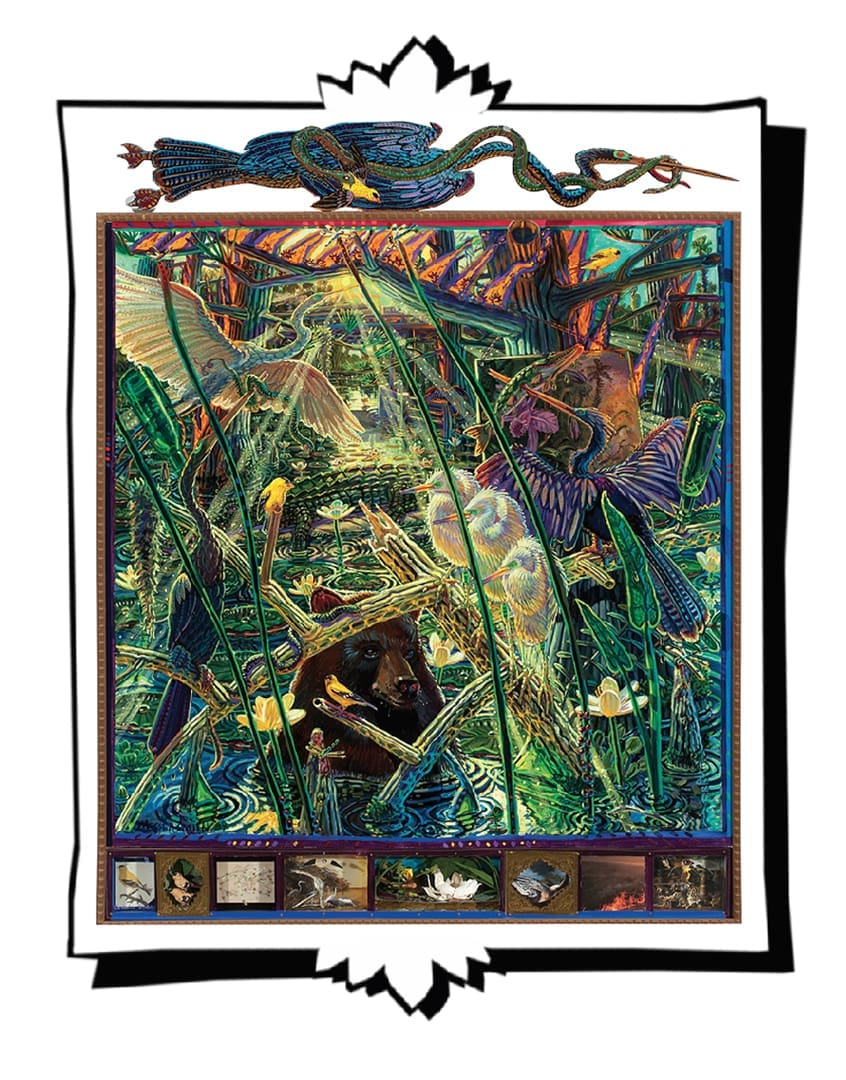
NATURE AS SACRED AND THREATENED
Messersmith’s paintings could be altarpieces in a cathedral of nature. His saints have fur or feathers, snouts and paws; his demons are hunters or the slavering dogs doing the bidding of humans. Every inch of his monumental and luminous canvases (some eight feet tall) thrums with movement: examine the pale-green luna moths in flight, apple snails clinging to a reed, freckled pitcher plants thrusting up from the ground, magnolias in full bloom pushing into the frame, long-necked anhingas, little blue herons and moon-faced barn owls jockeying for space on tree limbs. Sometimes, Messersmith stacks megafauna on top of each other in a way that doesn’t happen in the real woods: monarch butterflies rest on the heads of young snowy egrets perching on the back of a fox standing on a bobcat balancing on a panther who’s lounging on a large alligator clinging to a tree limb—a tree limb about to break. The metaphor’s not tough to untangle. “My paintings take the side of the animals,” says Messersmith. “They’re under such pressure just for a place to live, just to exist.”
I visit Messersmith on a moody Tallahassee afternoon, on which the sunshine is punctuated by fat storm clouds that will burst with thick rain in a few hours. His studio is in the back of the house he and his wife Susan share in an oaky old neighborhood not far from the Capitol. Big windows look out onto a garden lush with bromeliads, palms and elephant ears.
“Gardening and painting are almost the same thing,” he says. “Creating a world that’s an avoidance of the world.”
One of my favorites in his new series of smaller paintings—a mere 4 by 4 feet—shows a snarling bobcat hunched behind a brass rail, illuminated by flaming birds and moths. The hard-faced ghosts of human hunters emerge out of the pale moonlight below blue bottles stuck on magnolia branches. Messersmith has a real bottle tree outside, a tall metal rack festooned with cobalt blue glass bottles. The bottle tree is an old Southern custom, probably brought over by slaves from Congo. The blue bottles catch spirits and mediate between the human world and the world of ghosts. It occurs to me that Messersmith’s paintings catch spirits, too, the voiceless souls of the natural world we keep doing our damnedest to destroy, as he translates them to canvas. When I tell him this picture is both beautiful and distressing, Messersmith smiles. “I suppose so,” he says.
Messersmith goes often to the St. Marks Wildlife Refuge on the Gulf Coast, where he hikes and paints en plein air. Messersmith’s birds are often on fire, searing yellow and orange flames emanating from their heads and wings like old images of the Holy Spirit come to bring a revelation.
His art conjures a sense of the numinous, even the sacred. He shows me a copy of a book of hours, made for a 15th-century Dutch princess. The illustrations of saints and biblical stories glow with lapis lazuli blues, fiery topazes, emerald greens and amethysts—the same rich shades Messersmith uses in his work. Like on a Gothic altar screen, there’s a main image, a narrative with something dramatic happening, then a series of other images around it. Messersmith’s big canvases come with a kind of predella, the bottom step of the altarpiece, with shadow boxes holding flowers or animals or sometimes tiny dioramas to amplify or comment on the main picture. On the sides or the tops, he places carved plants or animals. On one piece, lean, snarling carved hounds have sharp little chips of broken mirror for claws.
Messersmith comes from St. Louis originally. He was taken with the North Florida landscape from the time he arrived in 1985 to teach painting at Florida State. The landscape of the Midwest didn’t excite him. “There was nothing dangerous there,” he says. Here, he says, the darkness is thick, evocative, full of the sounds of birds, insects, frogs. You can drive “ten minutes out of the city and straight into a national forest where you might encounter anything—bears, gators, cottonmouths, great blue herons and ibis.” He places himself in the long line of Florida landscape artists, including the late 19th-century painters Martin Johnson Heade and George Inness, who came south on Henry Flagler’s railroad to escape the northeastern winters. Their paintings present the state, then the least populated in the South, as a pastoral dream of rosy sunsets, pacific rivers and graceful palms: nature at its gentlest. Messersmith’s Florida is less idyllic: If you look closely at his paintings, all is not well. In his 2014 Malaise of Discontent, the iridescent blues and greens begin to resolve themselves as you make out several logging trucks with headlights jabbing the moonlit sky, loaded with longleaf pines ripped from an ancient forest, roaring past a couple of billboards touting Florida as a “vacation paradise.” Three ivory-billed woodpeckers, a species teetering on the verge of extinction, perch on what’s left of a pine tree.

WORRY FOR THE WILD
Linda Hall’s art is full of birds, too—and felines, canines, ursids, cervids and intriguing hybrids thereof. Hall is a superb painter; I own several of her enigmatic watercolors of magical swamps with translucent cypress knees, golden skies and girls with the heads of alligators. Lately, she’s been sculpting animals in fabric and papier-mache. If Messersmith’s work laments the degradation of wild Florida and the disappearance of its animals, Hall tries to repopulate the landscape with new critters: patchwork deer with pearls on their heads, bears with beaded and glittering muzzles, and beaked and feathered bird masks to be worn by sneaky cats. One of Hall’s most arresting pieces is a bear, big as a real grizzly. The cloth “suit” has an opening into which a human could climb and go off terrorizing the neighborhood. Hall fashions her work out of cloth, tissue paper, wire, faux fur, sequins, bird nests, dried flowers and real antlers. She says a taxidermist she knows in Havana (the one just north of Tallahassee, not the one in Cuba) gave her the rack on the patchwork deer’s head. Many of Hall’s animals are soft, meant to hang or drape, intentionally left without innards.
“I make them empty,” says Hall. “Something has been inside or something might yet get inside of them. I think it’s a way of holding onto things that are passing.”
(Like Messersmith’s, Hall’s work evokes the pain of loss and worry for the future of the wild.) Hall used to drive a tour boat as an AmeriCorps volunteer, explaining to visitors the cornucopian biodiversity of Wakulla Springs State Park, with its alligators, otters, eelgrass, osprey, manatees and mullet. And both draw from sacred art, claiming for the flora and fauna of Florida the mythic power of medieval Christian iconography. Hall’s animals are as richly clad and bejeweled as a Madonna statue in a Spanish church. The similarities aren’t surprising: Messersmith was one of Hall’s professors at FSU, where she got her bachelor’s in fine arts.
“We hit it off on a deep visual art level,” she says. She cites his work as an influence on hers; for his part, Messersmith says Hall inspires him: “There’s always a lot of mutual thieving.” Indeed, in a painting of Messersmith’s that hangs in his living room, I spotted one of Hall’s “fertility goddess angels,” a red-lipped, round-breasted winged figure. She used to paint them on hunks of wood she’d nail to telephone poles around Leon County.
Hall believes in work breaking out of the gallery: “I think art belongs in the wild,” she says. “Not in institutions.” Her art appears often in traditional spaces—she has shown in museums in New York, Atlanta and Jacksonville—but she also takes it into the street, staging parades of people wearing her animal suits and heads. As an adjunct art professor at FSU, she herds her students outside, teaching them to observe as they sketch or take photographs. Hall gets around herself, too: She’s worked in puppetry at the renowned Bread and Puppet Theater in Vermont and collaborated on dance and film projects. But her studio, a small white wooden house with a front porch, an enormous wreath of scuppernong vines and often a couple of semi-feral black cats lounging around, always pulls her back to Tallahassee. The little house is one of the last surviving structures on a narrow, almost-secret street in the remnant of a historic African-American Tallahassee neighborhood called Smokey Hollow. Hall thinks she remembers attending a party here back in the 1980s, a bohemian throw-down at which a beloved local band called The Implications played.
“I had this vision of me in a white dress in this very place, which is now my studio, and somehow I just knew I was going to grow
old here.”
Hall left Tallahassee in the late 1980s for an MFA at the University of North Carolina at Chapel Hill and lived for a while in Atlanta and Athens, Georgia. Somehow, though, North Florida kept calling her back: “I was a military brat and never had a sense of home until I came to Tallahassee in 1983. I’m rooted here.”
ANIMALS AS TOTEMS

Robin Rodgers has always known where “home” lay: the green hills and mysterious waters of West Florida. He’s from Chattahoochee, an old Gadsden County town at the conjunction of the Flint, Apalachicola and Chattahoochee rivers. Growing up, he liked to listen to Jack Wingate, a local historian and collector of Native American artifacts who also owns a fish camp decorated with taxidermied bobcats and bear heads. The sense of the past is palpable there: 1,000-year-old temple mounds rise by the Apalachicola River. Rodgers’s parents used to camp on sandbars in the Apalachicola and collect things that washed up: fossilized shark teeth, spear points, arrow heads and pottery shards. He lives now in northern Leon County, and at his house one afternoon, he takes a curved piece of Native American pottery out of a display case. He found it when he was a kid. It’s possibly part of a bowl or other vessel, incised and carved with what looks like a stylized hand. “This is 800 years old,” he says. “I think it’s what started me on the road to pottery.”
As an undergraduate at the University of Montevallo in Alabama, Rodgers had intended to become an illustrator. But then he took a pottery class and loved the way he could make circular forms on the wheel tell a story in clay. After earning an MFA in ceramics from Florida State, he settled in Tallahassee, where he throws jars on which monarch butterflies flutter, egrets dance and turtles swim in turquoise seas. He crafts bowls with frogs or pelican heads as handles, often using a 500-year-old Japanese technique called raku firing, in which the piece is removed from the 2,000-degree kiln and smoked to darken the random crackled patterns of the clay. Rodgers also makes face jugs, following in the ceramic folk tradition that goes back to Europe in the Middle Ages, pre-Columbian America and Africa. But his best-known work represents and celebrates the creatures that inhabit his own area: “Animals in their environment, doing their thing,” he says. And Rodgers’s favorite animal, or at least the one he seems to depict most often, is the woodpecker. Messersmith paints woodpeckers, too, and Hall has crafted her own versions of them, but with Rodgers the bird—especially the ivory-billed version, with a long, pale scissor-blade beak—is an impressively large totem animal (20 inches high, 30 inches at the wingspan). Rodgers has even been on a pilgrimage to Arkansas to try and spot one after there were sightings in 2004 and 2005. Alas, the woodpecker didn’t show. “They’re dramatic and big,” says Rodgers. “Some Native American cultures thought the woodpeckers could communicate with the other world.”
Rodgers’s ivory-bills, with their sharp triangular red-and-black heads, perch on his jar lids, stare at each other from opposite sides of a bowl, or fly on the surfaces of his pots. They are at once zoologically correct and mythic, beautiful and haunting, a contemporary iteration of an ancient tradition.
“There’s something satisfying about taking clay, which comes from eroded mountains that ended up in deltas, making something and transforming it by fire,” says Rodgers. “There’s a connection.”
The sad thing is that for many people, a connection to the earth, to the flora and fauna that surround us outside of our air-conditioned boxes, is being lost. Seems to me that these artists remind us to notice what’s left of Florida before we drain it, pave it and drive it into extinction. “It’s all going to come back to haunt us,” says Messersmith. And as for the animals, “Their demise is our demise.”

